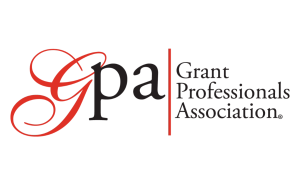Even though funders fall into general categories (e.g., government agencies, corporate foundations, private foundations, affiliated giving programs, etc.) each has a culture, requirements, and expectations. When it comes to reporting, many provide grantees with thorough guidance on what information to include. Some require grantees to answer a set of questions, others provide forms that must be completed, and some require that organizations enter specific data through online portals.
“It may be tempting to grumble about detailed reporting requirements, but I encourage you to think of them as a gift,” said Barbara Floersch, grants expert and author of You Have a Hammer: Building Grant Proposals for Social Change. “When you understand exactly what the funder wants to know you can put simple, information-gathering systems into place that will eliminate the chaos that accompanies a rush-to the finish approach to reporting.”
When nonprofits receive a grant award, it is best practice to hold a kick-off meeting in which team members review program and financial obligations, deliverables, roles and responsibilities, and the myriad other details associated with program implementation, including reporting demands, according to Floersch. Generally, the meeting highlights report due dates, designates the person responsible for pulling the report together, and stops there. But by going beyond that to walk through reporting questions or forms, or view the online data portal, the team can build systems that enable the assigned person to produce high-quality reports with minimal dread and drama.
Designing systems to capture and deliver information will require an up-front investment of time, but the payoff will be thorough, on-time reports and less stressed staff members. Funders require different information, but here are a few examples of systems that support some common reporting questions.
Are activities being delivered as expected and within the approved timeline?
Construct an activity monitoring form for each staff member that is specific to their responsibilities and tied to the approved timeline. Include space for comments on successes and challenges.
How many people are participating in the program? What are the demographics?
Programs commonly collect information on services via a database from which participant numbers and demographics can be extracted when needed. Start by doing a crosswalk between what is collected in the database and the reporting information you will need to provide. “It’s not unusual to find that some of the required data points are missing,” said Floersch. “Work with database managers, administrators, and others during program start-up to establish systems to collect those missing bits and pieces.”
Is the program producing the expected results?
If the grant proposal included progress benchmarks tied to the timeline, you’re ahead of the game. Otherwise, you will need to review the grant proposal and establish measurable indicators you can use to report progress towards expected outcomes.
Floersch recommended that the program manager collect information pieces monthly, review them, then provide them to the person who will write the report. “A monthly system provides a number of benefits,” said Floersch. “The writer can clarify questions while activities are fresh in the minds of staff members and can begin drafting sections of the report. It’s also an excellent way to catch problems early and make course corrections before the end of the reporting period.”








